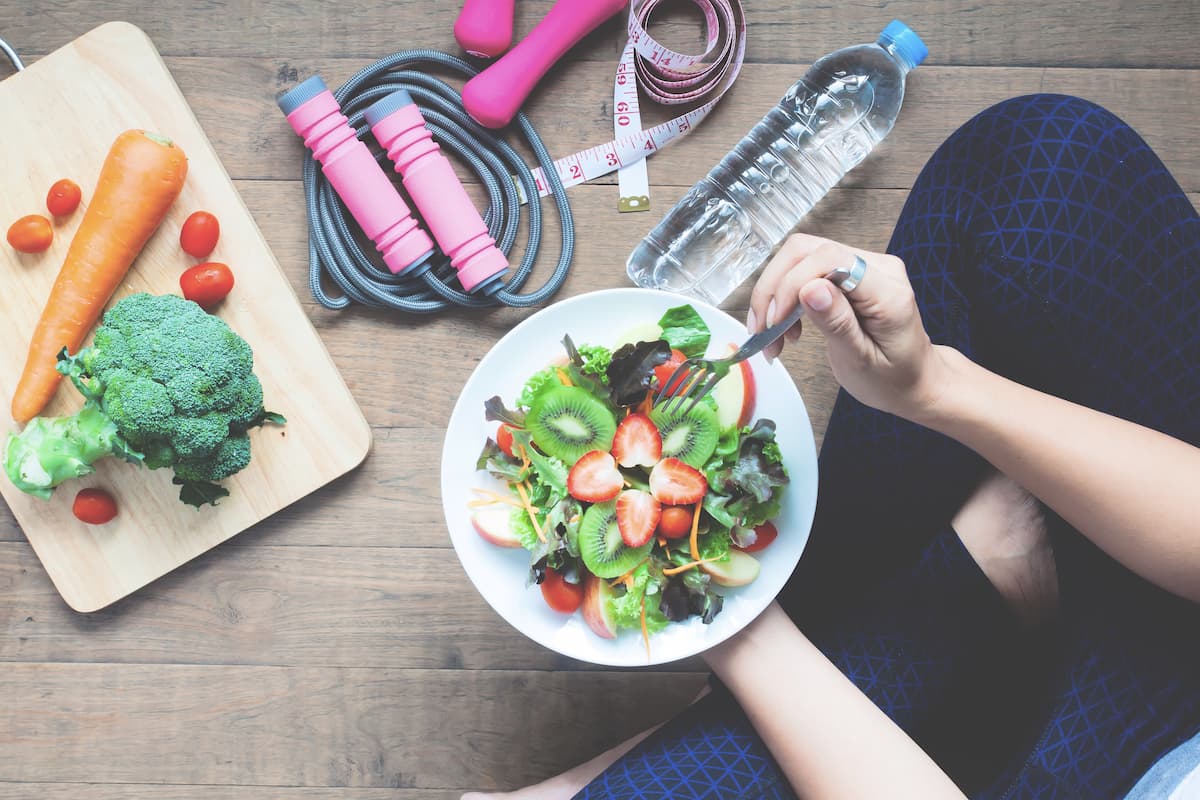The Dabrowski Diet: principles, recipes, opinions, effects, complications
Dr Dabrowski's diet - hit or miss?


Learn more about our editorial process
.

Learn more about our editorial process
.

Learn more about our editorial process
.

Learn more about our editorial process
.
Why you can trust us
Articles on Natu.Care are written based on scientific research, data from government websites and other reliable sources. The texts are written in cooperation with doctors, nutritionists and other health and beauty experts. Articles are reviewed before publication and during significant updates.
.Learn more about our editorial process
.Information about advertisements
Content on Natu.Care may contain links to products from the sale of which we may receive a commission. When creating content, we adhere to high editorial standards and take care to be objective about the products discussed. The presence of affiliate links is not dictated by our partners, and we select the products we review ourselves completely independently.
.Learn more about our terms and Conditions
.Raw vegetables, fruit and fasting. Anyone who has been on the Dabrowski diet at least once knows what they are talking about. Those who have tried it are many. The same cannot be said, however, for those who have persevered to the end.
Two weeks on salads. And only from specific vegetables and fruits. Plus practically no fats in which to dissolve the vitamins eaten. And no protein. No wonder so many people don't complete Dabrowski's famous fast, or never want to hear about it again.
From this article you will learn:
- Where Dr Dabrowski's diet came from.
- What the principles of the diet are.
- What are the principles of this way of eating.
- What you can eat during the Dabrowska fast.
- What you can eat during the Dabrowska fast.
- What effects can you expect.
- Is the Dabrowska diet really good for your health.
- What do people think about it?
- What do the experts think about it.

Odkryj, co dla Twojego zdrowia i urody może zrobić Natu.Care Vegan Protein, wegańskie białko roślinne -15% z kodem BLOG15
Natu.Care Vegan Protein
Pyszne, wegańskie białko roślinne, biała czekolada i malina - pomoże uzupełnić Twoją dietę w wartościowe proteiny. To aż 26 g białka i tylko 136 kcal w porcji.
Sprawdź cenę
Dzięki białku od Natu.Care moja odporność się poprawiła a włosy wzmocniły. A smak białej czekolady z maliną - to świetnie połączenie!Gabriela
See also:
- The SIRT diet .
- The Ketogenic Diet .
- DASH diet
- Mediterranean diet
- Digestible diet
- Diabetes diet
- Diet in diabetes and insulin resistance
What is the Dabrowski fast?
.
Dr Eve Dabrowska's diet, also known as Dabrowska's fast or the cleansing fruit and vegetable diet, is a four-step dietary regimen, best known for its second phase, which involves restrictive kilocalorie restriction and eating only specific groups of vegetables and fruitsand.
.
As the name suggests, the author of the diet is Ewa Dąbrowska, MD, who, until the 1990s, worked as an assistant professor at the Department of Internal Medicine at the Medical University of Gdansk, according to Dr Dąbrowska's official website. This information can also be found in the Central Register of Doctors.
.
According to the theory put forward by the author, periods of fasting promote the process of autophagy, i.e. the body's own elimination of damaged and dead cells. They are also supposed to stimulate the famous sirtuins, known as longevity proteins.
Both mechanisms are said to promote the body's health processes and act on conditions such as:
.
- type 2 diabetes, .
- cardiovascular diseases, .
- lipid disorders, .
Dr Dabrowska's diet is, by design, geared towards supporting the treatment of various conditions and taking care of overall improvement health - weight loss may be related to this, but is not her primary goaland.
.
Importantly, the author herself does not recommend using this diet in place of conventional treatments, but rather as a complement to them or a last resort when standard medical procedures do not work. It can also be used simply as a prevention of cardiovascular, cancer and lifestyle diseases.
Natu.Care Collagen Premium 5000 mg, mango & passion fruit

- Collagen content: 5000 mg marine collagen hydrolysate
- Additional active ingredients: vitamin C, low molecular weight hyaluronic acid (and L-theanine and coenzyme Q10 in cocoa flavoured collagen or vitamin A and vitamin E in mango–passion fruit flavoured collagen)
- Form: powder sachets
- Dose: 1 sachet per day
- Sufficient for: 30 days
Product description
Fish collagen from the Natu.Care brand in a dose of 5000 mg, based on certified ingredients of the best quality. Regular supplementation will positively influence the appearance of the skinóry, hairów and nails – they will be rebuilt and strengthened from the inside.
In addition to collagen, which is valuable for health and beauty, it also offers other active ingredients that help to maintain a youthful complexion, shiny hair and strong nails.
The formula contains a sufficient portion of the active ingredient to positively affect joints, the musculoskeletal system and immunity.
Natu.Care Premium Collagen is available in two flavours – Cacao Bloom and Rise&Shine. Both formulas are based on the following active ingredients: marine collagen hydrolysate, wild roseóbud extract and hyaluronic acid.
Additionally, Cacao Bloom contains natural L-theanine, coenzyme Q10 and defatted Dutch cacao. Rise&Shine instead contains vitamin E and vitamin A.
These are the best collagens in the world.
These best fish collagens on the market also rós taste – Cacao Bloom is a treat for chocolate lovers. Rise&Shine will appeal to those whoólike the refreshing taste of mangoófruit and passion fruit.
Pros and cons
Pros:
- Vitamin C supports the body's collagen production, enhancing its effectiveness.
- An effective dose of hyaluronic acid, which additionally supports skin hydration and joint health.
- Fish collagen absorbs 50% better. Additionally, the manufacturer specifies the fish species it is sourced from (Atlantic cod).
- The composition has been tested by the independent and accredited J.S. Hamilton laboratory.
- MSC (Marine Stewardship Council) quality certification, which confirms that the collagen source supports sustainable fishing practices.
Cons:
- None.
Additional information
Natu.Care's fish collagen receives praise for its delicious taste. You won't find the fishy aftertaste that often comes through in other collagens. Plus, you have two tasty flavors to choose from: cocoa and mango-passionfruit.
Active ingredients like coenzyme Q10, hyaluronic acid, and natural L-theanine provide anti-inflammatory and antioxidant benefits while slowing down aging processes.
User review
Super, after about 6 weeks of use, the skin on my face became noticeably firmer. Wonderful taste.
Ania ZalewskaNatu.Care customer
Natu.Care Premium collagen 10 000 mg, mango-maracuja

- Collagen content: 10,000 mg marine collagen hydrolysate
- Additional active ingredients: vitamin C, low molecular weight hyaluronic acid (and L-theanine and coenzyme Q10 in cocoa flavoured collagen or vitamin A and vitamin E in mango–passion fruit flavoured collagen)
- Form: powder sachets
- Dose: 1 sachet per day
- Sufficient for: 30 days
Product description
One of the strongest collagens on the market, whichós provides as much as 10,000 mg in a daily serving. This allows the formula to effectively support the condition of the skin, hair and nails.
With this supplement, you will support your beauty, which will allow you to visually stop the ageing process and feel a second youth!
Natu.Care Collagen Premium 10 000 mg comes in two flavours – cherry and mango-maracuja. Both formulas have the same product backbone – collagen, hyaluronic acid and vitamin C.
In the cherry version you additionally find glucosamine, chondroitin and Indian frankincense resin extract. Mango-maracuja, on the other hand, contains vitamin E and vitamin A.
Pros and cons
Pros:
- Tested collagen formula – SeaGarden, whose effects have been confirmed in clinical studies.
- Effective dose of hyaluronic acid, additionally moisturizing the skin and positively impacting joint health.
- Vitamin C supports the body’s natural collagen production.
- The composition has been tested by the independent and accredited J.S. Hamilton laboratory.
- The product has an MSC (Marine Stewardship Council) quality certification – the collagen source supports sustainable fishing practices.
Cons:
- None.
Additional information
Users praise Natu.Care Collagen Premium for the easy dissolvability of the powder.
User review
I noticed a significant improvement in my skin texture after a few weeks of taking collagen regularly. My complexion is now as soft as velvet!
Natu.Care Collagen Premium 10000 mg, cherry

- Collagen content: 10,000 mg of hydrolyzed bovine collagen
- Additional active ingredients: vitamin C, low molecular weight hyaluronic acid, glucosamine, chondroitin, extract of Indian frankincense resin (boswellia serrata)
- Form: powder sachets for drinking
- Serving: 1 sachet per day
- Lasts for: 30 days
Product description
One of the strongest collagens on the market, providing as much as 10,000 mg per daily serving. This product can effectively support the condition of joints, skin, hair, and nails.
With this supplement, you will support your skeletal and joint system as well as your beauty, helping you visually halt the aging process and feel rejuvenated!
Pros and cons
Pros:
- The daily portion of collagen is very large – as much as 10,000 mg.
- Proven collagen formula – COLLinstant, whose effectiveness has been confirmed in clinical studies.
- Effective dose of hyaluronic acid, which additionally moisturizes the skin and positively affects joint health.
- Vitamin C supports the body's natural collagen production.
- Glucosamine is a fundamental building block of compounds found in joint cartilage and a component of collagen that gives elasticity to connective tissue in tendons.
- Chondroitin is a natural component found in the human body, mainly in cartilage. This large molecule (mucopolysaccharide) has the ability to absorb water, which helps maintain the elasticity and resilience of cartilage.
- Frankincense resin extract supports blood circulation and joint mobility and reduces their stiffness. It may help alleviate inflammatory conditions.
- The composition has been tested by the independent and accredited J.S. Hamilton laboratory.
Cons:
- None.
Additional information
Users praise Natu.Care Collagen Premium for the easy dissolving of the powder.
Premium Sodium Butyrate
Product description
Premium Sodium Butyrate is a natural support for your digestive system. With a high dose of butyric acid (940 mg), it supports the regeneration of the intestinal mucosa, improving gut health and function, and aids in the absorption of nutrients. By taking care of your intestines, you're taking care of the health of your entire body.
Studies involving people suffering from irritable bowel syndrome confirm that sodium butyrate is ideal for supporting issues related to bacterial flora imbalances (for example, after antibiotic therapy), constipation and diarrhea, inflammation of the intestinal mucosa, or a diet low in fiber.
Premium Sodium Butyrate capsules are made using the innovative DRcaps® technology. This guarantees that the active ingredients in the product are protected from the destructive effects of stomach acids and digestive enzymes. As a result, we can be sure that the beneficial ingredients are released in the small intestine and are fully absorbed by our body.
Premium Sodium Butyrate from Natu Care is 100% tested, and its composition contains only the highest quality raw materials.
Pros and cons
Pros:
- Supports digestive system function
- Helpful for various gastrointestinal conditions, including IBS
- High dose of butyric acid in each capsule
- Eco-friendly, clean, and tested composition
- Free from added sugar, gluten, GMOs, and lactose
- Innovative capsule technology - DRcaps
Cons:
- None
Additional Information
Take 3 capsules daily at any time of the day, preferably with a meal. Swallow the capsules whole with water.
Premium Sodium Butyrate is intended for adults.
The product should be used under medical supervision.
User review
I've been using the product for 2 weeks. My stomach feels lighter, and my digestion has improved. I recommend it.
Natu.Care Premium Magnesium + Vitamin B6

- Magnesium content per day: 305 mg
- Additional active ingredients: Vitamin B6 (2.1 mg)
- Form: capsules
- Serving size: 3 capsules per day
- Sufficient for: 30 days
Product description
The Premium Magnesium + Vitamin B6 dietary supplement is a comprehensive product that combines three organic forms of magnesium (citrate, malate, and diglycinate) and vitamin B6 in highly absorbable forms.
Magnesium is an essential mineral without which our bodies cannot function properly. It supports the immune, nervous, and muscular systems, maintains electrolyte balance, and is involved in cell division and the regulation of mental functions.
Research shows that magnesium supplementation is even more effective when accompanied by vitamin B6, which is included in our product. Vitamin B6 is responsible for the proper functioning of the nervous and immune systems, as well as the proper functioning of the heart.
If you want to safely get rid of feelings of fatigue, concentration problems, hair loss, muscle cramps, trembling, or irritability, reach for Premium Magnesium from Natu.Care, tested by the independent, certified laboratory J.S. Hamilton Poland.
Pros and cons
Pros
- Supports the proper functioning of the nervous and immune systems.
- Reduces feelings of fatigue and tiredness.
- Maintains proper psychological functions.
- The purity of the ingredients (free from anti-caking agents, artificial fillers, and additives such as titanium dioxide, microcrystalline cellulose, talc, magnesium stearate, and silicon dioxide) has been confirmed by laboratory tests.
- High absorption of ingredients.
- Soft capsules that are easy to swallow.
- Suitable for vegetarians and vegans.
Cons
- None.
Additional information
Take with a meal, 3 capsules per day.
The capsules should be taken with at least 250 ml of water.
If you have trouble sleeping, it is advisable to take 1 capsule in the morning and 2 capsules in the evening, no later than 4 hours before bedtime.
Avoid combining with products high in calcium (milk, yogurt, cheese), as this may negatively affect magnesium absorption.
Pregnant and breastfeeding women should consult a doctor before starting supplementation.
User review
I’m very impressed with the speed of delivery. The product itself is of high quality and absorbs well. After two weeks of supplementation, I’ve noticed a significant improvement in muscle recovery, especially during periods of intense training. I highly recommend it!
Product description
The dietary supplement contains omega-3ᵀᴳ, or omega-3 acids in the form of trójglyceridesów. Scientific studies suggest that this form of fatty acidsós up to 2 times better absorbed than the estersós present in many dietary supplements on the market. This means that you are assured of their effectiveness and of supplying yourself with valuable omega acids.
Fatty acids omega-3 are derived from wild anchovy oil. It is a rich source of healthy fats that are essential for the health of the cardiovascular, immune and nervous systems, as well as the proper function of vision, joints muscles.
Scientific research suggests that wild anchovies are a good source of healthy fats.
Scientific research also suggests that an adequate intake of omega-3 fatty acidsós protects against and supports the treatment of depression and anxiety disorders. In addition, omega-3s influence the hydration and appearance of the skinóry and support healthy sleep.
.
The formula contains a total of 750 mg of EPA+DHA acidsós, which is three times higher than the recommended minimum of 250 mg for the Polish population. Omega-3 TG Premium has studies indicating that its TOTOX is 9, which is a very good result.
Supplementation of omega-3 fatty acidsóis recommended for anyone who does not eat 1–2 portions (approximately 300 g) of oily fish per week. Children during growth, seniors, physically active people, vegans and vegetarians, as well as patients undergoing cardiovascular treatment and prevention of heart disease also have an increased need.
Pros and cons
The dietary supplement contains omega-3ᵀᴳ, or omega-3 acids in the form of trójglyceridesów. Scientific studies suggest that this form of fatty acidsós up to 2 times better absorbed than the estersós present in many dietary supplements on the market. This means that you are assured of their effectiveness and of supplying yourself with valuable omega acids.
Fatty acids omega-3 are derived from wild anchovy oil. It is a rich source of healthy fats that are essential for the health of the cardiovascular, immune and nervous systems, as well as the proper function of vision, joints muscles.
Scientific research suggests that wild anchovies are a good source of healthy fats.
Scientific research also suggests that an adequate intake of omega-3 fatty acidsós protects against and supports the treatment of depression and anxiety disorders. In addition, omega-3s influence the hydration and appearance of the skinóry and support healthy sleep.
.
The formula contains a total of 750 mg of EPA+DHA acidsós, which is three times higher than the recommended minimum of 250 mg for the Polish population. Omega-3 TG Premium has studies indicating that its TOTOX is 9, which is a very good result.
Supplementation of omega-3 fatty acidsóis recommended for anyone who does not eat 1–2 portions (approximately 300 g) of oily fish per week. Children during growth, seniors, physically active people, vegans and vegetarians, as well as patients undergoing cardiovascular treatment and prevention of heart disease also have an increased need.
Additional information
The dietary supplement contains omega-3ᵀᴳ, or omega-3 acids in the form of trójglyceridesów. Scientific studies suggest that this form of fatty acidsós up to 2 times better absorbed than the estersós present in many dietary supplements on the market. This means that you are assured of their effectiveness and of supplying yourself with valuable omega acids.
Fatty acids omega-3 are derived from wild anchovy oil. It is a rich source of healthy fats that are essential for the health of the cardiovascular, immune and nervous systems, as well as the proper function of vision, joints muscles.
Scientific research suggests that wild anchovies are a good source of healthy fats.
Scientific research also suggests that an adequate intake of omega-3 fatty acidsós protects against and supports the treatment of depression and anxiety disorders. In addition, omega-3s influence the hydration and appearance of the skinóry and support healthy sleep.
.
The formula contains a total of 750 mg of EPA+DHA acidsós, which is three times higher than the recommended minimum of 250 mg for the Polish population. Omega-3 TG Premium has studies indicating that its TOTOX is 9, which is a very good result.
Supplementation of omega-3 fatty acidsóis recommended for anyone who does not eat 1–2 portions (approximately 300 g) of oily fish per week. Children during growth, seniors, physically active people, vegans and vegetarians, as well as patients undergoing cardiovascular treatment and prevention of heart disease also have an increased need.
Expert opinion
The dietary supplement contains omega-3ᵀᴳ, or omega-3 acids in the form of trójglyceridesów. Scientific studies suggest that this form of fatty acidsós up to 2 times better absorbed than the estersós present in many dietary supplements on the market. This means that you are assured of their effectiveness and of supplying yourself with valuable omega acids.
Fatty acids omega-3 are derived from wild anchovy oil. It is a rich source of healthy fats that are essential for the health of the cardiovascular, immune and nervous systems, as well as the proper function of vision, joints muscles.
Scientific research suggests that wild anchovies are a good source of healthy fats.
Scientific research also suggests that an adequate intake of omega-3 fatty acidsós protects against and supports the treatment of depression and anxiety disorders. In addition, omega-3s influence the hydration and appearance of the skinóry and support healthy sleep.
.
The formula contains a total of 750 mg of EPA+DHA acidsós, which is three times higher than the recommended minimum of 250 mg for the Polish population. Omega-3 TG Premium has studies indicating that its TOTOX is 9, which is a very good result.
Supplementation of omega-3 fatty acidsóis recommended for anyone who does not eat 1–2 portions (approximately 300 g) of oily fish per week. Children during growth, seniors, physically active people, vegans and vegetarians, as well as patients undergoing cardiovascular treatment and prevention of heart disease also have an increased need.
Natu.Care Vitamin D 2000 UI
Product description
Vitamin D plays a crucial role in our health and well-being. It affects calcium and phosphate metabolism, which translates to healthy bones and teeth. It also helps regulate the immune system, and studies indicate its influence on the functioning of the nervous system.
Vitamin D, although called a “vitamin,” is actually a prohormone that our body produces on its own, primarily under the influence of sunlight. Unfortunately, our modern lifestyle contributes to deficiencies of this essential vitamin. Working in enclosed office buildings, using (necessary!) SPF creams, and covering the body with clothing all make it very difficult, if not impossible, to obtain adequate levels of vitamin D from sunlight. This is why appropriate, year-round supplementation is so crucial.
Vitamin D from Natu.Care is a well-tested vitamin D3 suspended in safflower oil, a plant known for its numerous health benefits. The convenient, easy-to-swallow capsule will make supplementation a part of your daily, healthy routine, improving your overall well-being.
Pros and cons
Pros:
- Ensures proper functioning of the immune system
- Supports the maintenance of healthy bones and teeth
- Maintains proper heart, kidney, and muscle function
- Tested by an independent, certified laboratory
- Convenient and easy-to-swallow capsule
- Clean composition - free from added sugar, gluten, GMOs, lactose, and without preservatives or colorants
Cons:
- None.
Additional Information
Pregnant women and breastfeeding mothers should consult a doctor before using the product. This dietary supplement is intended for a healthy adult population up to the age of 75.
Collagen Booster - Glow Stories

- Active ingredients: bamboo shoot extract, Quatrefolic®, L-Methionine, L-cysteine, vitamin E, vitamin A, niacin (vitamin B3), vitamin B6, vitamin B2 (riboflavin), biotin, zinc, copper
- .
- Form: capsules
- .
- Dose: 1 capsule per day
- .
- Sufficient for: 60 days
- .
Product description
A dietary supplement containing vitamins, minerals and plant extracts thatósupport the skinóhand, hair and nails. The product is especially distinguished by the form of folate – it is Quatrefolic, whichós absorbed very well and is natural.
In addition to valuable vitamins and minerals, such as vitamin A, E, B3, B2 and biotin, the formula contains bamboo shoot extract, whichóry further enhances your beauty.
Pros and cons
A dietary supplement containing vitamins, minerals and plant extracts thatósupport the skinóhand, hair and nails. The product is especially distinguished by the form of folate – it is Quatrefolic, whichós absorbed very well and is natural.
In addition to valuable vitamins and minerals, such as vitamin A, E, B3, B2 and biotin, the formula contains bamboo shoot extract, whichóry further enhances your beauty.
Additional information
A dietary supplement containing vitamins, minerals and plant extracts thatósupport the skinóhand, hair and nails. The product is especially distinguished by the form of folate – it is Quatrefolic, whichós absorbed very well and is natural.
In addition to valuable vitamins and minerals, such as vitamin A, E, B3, B2 and biotin, the formula contains bamboo shoot extract, whichóry further enhances your beauty.
Dabrowska Diet - principles
.
Dr Dabrowski's diet consists of four phases, three of which should last for the same length of time. Its main phase is fasting, which involves limiting the kilocalories consumed to a maximum of 800 per day and is generally intended to last for 2 weeks.
Dr. Dabrowski's Diet is a dietary supplement that is designed to be effective in the long term.
However, in justified cases it is possible - under the supervision of a doctor - to extend the fast up to 6 weeks, but then the phase of coming out of the fast should last the same amount of time.
I have survived on the Dabrowska fast for 15 days and that is the best term for this diet. I used to believe in fasting detoxification and so on, now I know it doesn't work like that..
Carolina32 years old
Stages of the Dabrowski diet:
. .
|
Stage of the diet . |
What it's all about . |
||
| . |
Preparing the body for fasting |
It consists of eliminating meat, coffee and products to which we have an intolerance from our diet.
|
Preparing the body for fasting. |
|
Dr Dabrowska's post |
|||
| . |
Eating only (preferably raw) low-sugar fruits and low-starch vegetables and limiting caloric intake to a maximum of 800 kcal per day. |
Dr. Dabrowski's post |
|
|
Fasting out |
|||
| . |
Gradually add other foods to the diet, such as legumes or lean meat. This phase should last for the same length of time as the fasting period.
|
Stage by stage. |
|
|
Full-food nutrition |
A permanent change in eating habits, including basing one's menu on fruit and vegetables, being physically active and practising regular periods of fasting. |
A change in eating habits, including basing one's menu on fruit and vegetables, being physically active and practising regular periods of fasting. |
Fasting periods are considered a method of cleansing the body and a time when its natural homeostasis is restored.
Meal preparation
.
Dr Dabrowski's diet is based on raw vegetables and fruits and juices made from them. Fresh vegetables should form the basis of the diet, but it is also acceptable to cook, stew or bake them. However, oil should not then be added to them, and frying is not an option at all.
.
Dr Dabrowska diet - approved products (table)
.
Below you will find a list of products allowed during the Dabrowski fasting period.
. .
|
Product group . |
Specific examples . |
|
Vegetables |
Carrots Beet Selery Parsley Radish Cabbage (all varieties) Cauliflower Broccoli Kale Currants Onions Leek Clove Pumpkin Cabbage Cucumber Tomato Paprika Salad (all varieties) Celery Botwine Sorrel Spinach Herb |
|
Fruits |
Apples Grapefruit Lemon Berry |
|
Beverages |
Plant green shoot juices Other vegetable and fruit juices Fruit or herbal tea Sugar-free compote
Vegetable decoction Vegetable broth |
Bright - Vegetables and fruit are healthy, and their increased consumption can reduce the risk of many diseases, including cancer and cardiovascular ailmentsand. This is nothing new or revelatory. In fact, similar principles can be found, for example, in the DASH diet and the Mediterranean diet, which are, however, much less restrictive and, most importantly, much better balanced.
Eva Dabrowska diet - prohibited products
.
During strict fasting, you are not allowed to eat anything other than the products mentioned above. So all kinds of fats (even healthy ones), sources of proteins (dairy products, eggs, meat and even legumes) and carbohydrates (groats, bread, pasta, potatoes) are out. You will also not drink coffee and black tea.
During the period of coming off the fast and then the 'whole food' diet, the restrictions get less, but you should still stay away from all processed foods and fatty meats.
Dabrowska Diet - effects
.
The effect of the Eve Dabrowska diet is supposed to be, first and foremost, an improvement in health. It is supposed to occur through cleansing the body, recharging it with a powerful dose of antioxidants and activating sirtuins, i.e. proteins that are thought to have the ability to repair damaged DNAand.
.
Of course, the fasting stage is also associated with weight loss due to the restrictive limitations on kilocalorie supply. However, this is a side effect, one might say. Although in some conditions (such as type 2 diabetes), losing weight itself also has a therapeutic effect. Therefore, in appropriate cases and under the supervision of a doctor, Dr Ewa Dąbrowska recommends extending the fasting stage for up to 6 weeksand.
For a holiday with Dr Dabrowska
.The Dabrowska diet is a real multi-branch business. If you don't feel up to taking care of the recommendations yourself, you can go to the dozen or so centres in Poland and abroad that run holidays under the doctor's patronage. On such holidays, patients are nourished according to Dabrowska's fasting recommendations.
..
And if you cannot afford a holiday with the Dabrowska diet, but need help in implementing this way of eating, you are left with the app. You will find recipes, shopping lists and the ability to track your progress. If you count the monthly price, the cheapest version (annual subscription) costs PLN 249and.
I lost almost 5 kg, but immediately after the fast I felt so hungry that I even craved strange combinations like herring with a bar and crisps, at once of course. Despite a solid meal, I continued to feel hungry. This went on for a few weeks and overall the weight came back on, and I think I supplied myself back with those toxins by eating meat and sweets..
Carolina32 years old
Eve Dabrowska Diet - side effects and complications
.
For your body to function properly, you need more than just fibre, vitamins and minerals. You also need proteins, fats and carbohydrates. And these three are - ironically - in short supply in Dr Dabrowski's diet.
.
If you don't provide yourself with the complete set of nutrients for a day or two, probably nothing will happen. However, Dabrowska's fasting involves restricting them for several days (usually 2 weeks).
If you don't provide yourself with a complete set of nutrients for one or two days, you'll probably be fine.
It is worth noting that this 'diet' does not teach any healthy relationship with food - it is an 'from-to' stage, after which some people do not know what to do, how to eat, how to behave and either gain weight, reverting to old habits, or continue to starve themselves and damage their bodies..
 .
.
Kuba Pągowski clinical dietitian
If you decide to extend it (the guidelines allow you to stay on it for up to six weeks - under medical supervision) it already gets really dangerous. On top of that, there is a restrictive kilocalorie limitation.
.
To this day I resent raw carrots and cabbage, after which I had bloating and other attractions. Apparently I was unbearable, clingy and unpleasant. Towards the end, hunger would rouse me from sleep until I once broke the ban and ate cut vegetables at night because I couldn't stand it..
Carolina32 years old
Potential side effects of the Dabrowski diet are:
.
- nutritional deficiencies, .
- weakening of the body, .
- headaches and dizziness, .
- concentration problems, .
- gastrointestinal problems (flatulence, diarrhoea),
- hormonal disorders.
- hormonal disorders, .
- menstrual disorders, .
- disorders of intestinal flora,
- disorders of the intestinal flora.
- sleeping problems, .
In addition, it is worth noting that many scientific studies confirm that restrictive and excessive calorie restriction slows down the metabolismand. Therefore, when you return to taking in the correct number of kilocalories, you may experience a yo-yo effect. Often patients after such low-calorie diets gain more weight than they lose.
A sudden, drastic cut in dietary kilocalories is a huge stress on the body. It doesn't understand that we are on Dr Dabrowski's diet, it just feels its life threatened by such dietary restrictions. So he starts to go into 'survival mode', slows his metabolic rate and lowers his basal metabolism..
 .
.
Nina WawryszukNatu.Care editor and personal trainer
.
Does the Dabrowska fast have a scientific basis?
.
I have found no scientific studies dedicated to the effects of the Dabrowski diet (apart from articles and books written by the author of this diet herself). Therefore, in order to assess whether science confirms the effectiveness of fasting, it remains to look at its assumptions:
- .
- purification of the organism,
- the process of autophagy
- the autophagy process, .
- the activation of sirtuin, .
Body cleansing has been a trendy topic for years. Many strange methods and specifics have been created to help rid the body of toxins and parasites.
Detoxification diets and other means of deep cleansing have attracted considerable controversy, for the reason that they carry the risk of upsetting metabolism and bowel function. They can also have an adverse effect on the microbiota. Used over a long period of time, they can even lead to metabolic acidosisand.
It is also worth remembering that your body has its own mechanisms to fight pollution. These includeand:
- The skin -is the body's first defence barrier. It prevents the penetration of contaminants and microorganisms into the body.
- The skin - is the body's first defence barrier.
- Hairs and cilia - hairs in the nose stop larger particles from entering the respiratory tract. Instead, the cilia in the lungs remove contaminants that have overcome this first obstacle. .
- Immune system - the cells of the immune system have specialised to locate and destroy toxins and pathogens.
- Liver - the main organ responsible for removing toxins from the body. Produces a variety of enzymes and proteins (e.g. metallothioneins) that help to bind and remove harmful substances (including, for example, metals).
- Kinneys - this organ filters out all waste and impurities and removes them from the body with urine.
- Gastrointestinal tract - in it also to some extent the selection of substances into those that will be absorbed into the bloodstream and those that will be removed.
To assist your body in effective self-cleansing, it is advisable to follow a balanced diet, drink the recommended daily amount of water (this is mainly what facilitates flushing toxins) and be physically activeand. Instead, I have not encountered fasting in any official recommendations...
Autophagy is, in turn, the process by which the body captures damaged, old or 'used' parts of cells and converts them into energy - you could say it recycles. Dr Ewa Dąbrowska sees autophagy processes as a chance to cleanse and heal the body, repeatedly mentioning Prof Yoshinori Ohsumi, who was awarded the Nobel Prize in 2016 for his research on autophagyand.
It is worth mentioning, however, that most of this work was conducted on yeast. A 2021 review of studies on the effects of autophagy on various diseases indicates that this mechanism may indeed inhibit the development of some types of cancer, but on others it may have a ... stimulatory effectand.
Scientists are still looking for effective ways to modulate autophagy processes so that they only work to benefit the body and so that they can be used in cancer therapy .
.
Autophagy is also being researched for the treatment of neurodegenerative diseases, metabolic diseases (such as type 2 diabetes) and infectious diseases. However, this is very preliminary work and, more importantly, some results indicate both a positive and negative role for this process on health and the development of various diseasesand.
In taking care of our health, we should be careful to focus on what works best for our health - the basics, which are boring but are responsible for 90% of success, namely: proper diet, maintaining a healthy weight, regular physical activity, sleep and hydration..
 .
.
Kuba Pągowski clinical dietitian
.
Similarly with sirtuins. Most of the available studies are experiments conducted on animals (flies, mice, etc.). Although their results are promising, there is no conclusive confirmation of their effect in humansand.
What we know for sure about them is that they are responsible for energy metabolism in the cell. And what fires up the minds of their proponents are positions of anti-ageing and anti-cancer properties. Indeed, some studies suggest that sirtuins may have the ability to trigger DNA repair processesand.
Scientists, however, are cooling their euphoria: it is possible that there is something in these sirtuins, but nothing is known for sure yet. Further research is needed.
The Dabrowska diet - expert opinions
.
Jakub Pągowski, nutritionist:
.
"This model of nutrition does not teach any eating habits. Well, unless the bad ones, which impose gigantic restrictions. In my professional practice, I often meet patients after such turnarounds and they are usually like in a fog: they want to improve their health, lose weight, but they don't know how, and this type of strategy only hinders them and at most makes their health worse."
Nina Wawryszuk, Editor of Natu.Care and personal trainer:
.
"Dr. Dąbrowska's diet is very restrictive and puts you at risk of deficiencies such as omega-3 acids, iron or calcium. Causes too rapid and unhealthy weight loss - unfortunately, you lose not only body fat but also muscle tissue. 'To persevere' diets are not good, they do not teach healthy eating habits and are a stress on the body."
Dabrowska Diet - recipes
.
The following recipes are from the official Dr Dabrowska diet website (ewadabrowska.pl).
Kale and cabbage
.
Sauerkraut with carrots and apple
.
Ingredients:
.
- A handful of sauerkraut .
- A small carrot .
- Half a hard apple .
- Freshly ground pepper, paprika and turmeric .
- Optional: alfalfa (alfalfa) sprouts, finely chopped parsley and dill .
Method of preparation:
- Place the cabbage in a bowl .
- Pick the carrots and apple and grate them.
- Pick the carrots and apple and grate them.
- Stir together all the vegetables with the sprouts, season to taste and sprinkle with the parsley and dill.
- Add the carrots and apple.
Beetroot sourdough
.
Ingredients:
.
- 2 kg of beetroot .
- 3 litres of water .
- Stone salt .
- 3 bulbs of garlic .
- Some bay leaves, allspice seeds and black peppercorns .
- 2 tablespoons of pickled cucumber juice .
Method of preparation:
.
- Wash and slice the beetroot, mix with the garlic and spices.
- Pour the brine over the beetroot.
- Pour over the brine prepared at a ratio of 1 litre to 1 tablespoon of rock salt.
- Pour the brine over the beets.
- The beetroots should not float out - you can cover them with a small plate or a well-washed stone. .
- Place covered with a linen cloth in a warm, airy place for a few days. You can use a spoon to scoop up the foam that forms several times a day.
- Take care of the foam.
Carrot juice
.
Ingredients:
- 4 large carrots .
- A few drops of apple cider vinegar .
Method of preparation:
- Rinse the carrots thoroughly and squeeze the juice in a juicer.
- Prepare the carrots in the juicer.
- Add a few drops of apple cider vinegar to the freshly squeezed juice. .
Tasty.
.
Summary
.
- Dr Dabrowska's diet is a way of eating that is based on regular fasting.
- Fasting is a period of time when the body is not eating.
- Fasting periods are periods of restrictive cuts in caloric intake, involving the consumption of only allowed foods: certain vegetables and fruits.
- Fasting periods are periods of restrictive cuts in caloric intake, involving the consumption of only allowed foods: certain vegetables and fruits.
- Fasting periods can last from a few days to as long as 6 weeks, but for fasts exceeding 2 weeks, the author encourages people to stay under medical supervision. .
- The aim of the diet is to improve the overall health of the body. .
- Dabrowski's fast may have side effects, such as weakening of the body or slowing down of the metabolism.
FAQ
.Is it possible to drink coffee on the Dabrowska diet?
.You cannot drink coffee during Dr Dabrowski's strict fasting period. And outside this stage, it is best to drink coffee that is not too strong, black coffee.
The Dabrowska diet focuses on eating fresh, raw vegetables and fruit, and avoids processed foods.
An example of a healthy coffee on the Dabrowski diet can be an infusion of coffee beans brewed in a coffee machine or filter and served alone, or with a small amount of plant-based milk.
What the Dabrowski diet is about
.The Dabrowska diet involves consuming mainly raw vegetables, fruits and sprouts for 2-6 weeks. It is recommended to avoid animal products, including meat, dairy and eggs. It is also important to eliminate processed foods rich in preservatives, artificial additives and sugars.
.In the Dabrowski diet, it is important to eat foods in their raw form, as valuable nutrients such as enzymes, vitamins and minerals may be lost during heat processing.
How much weight can you lose on the Dabrowski diet?
.On the Dabrowski diet, you can lose an average of 2 to even 4 kg per week. In comparison, healthy weight loss is between 0.5 and 1 kg per week. Remember that losing weight is the result of a calorie deficit, but you should still provide your body with all the nutrients it needs.
The Dabrowska diet is extremely low in calories during fasting periods, and to make matters worse, it lacks some of the macronutrients such as protein or fat.
Is it possible to follow the Dabrowski diet with type 2 diabetes?
.Following the Dabrowski diet can be dangerous with type 2 diabetes and lead to fluctuations in insulin levels. It is better to focus on eating fresh vegetables and fruit, whole grain cereals, healthy fats (e.g. avocados, nuts), protein sources (e.g. lean meat, fish) and avoid highly processed foods, sugar and sweets.
How many apples can you eat on the Dabrowski diet?
.On the Dabrowski diet, apples are seen as a low-sugar fruit, so it is acceptable to eat 2 apples per day.
How many meals a day are eaten on the Dabrowski diet?
.During the fasting period, the recommendations are to eat 3 meals a day, and the total calories must not exceed 800 kcal. During other stages of the diet, the number and calorie content of meals can be adapted to individual needs.
Can bananas be eaten on Dr Dabrowski's diet?
.Bananas, as a fruit rich in sugar, are not on the list of foods allowed during the Dabrowski's fasting period. However, you can introduce them during the phase of leaving the fast and during the phase of complete nutrition.
Is it possible to exercise on the Dabrowski diet?
.Movement is important on Dr Dabrowski's diet, but it assumes moderate activity such as walking or body gymnastics. Gym workouts or typical cardio (e.g. running, crossfit) are not advisable as they exacerbate the kilocalorie deficit and worsen the body's regeneration, among other things.
Movement is not recommended.
This can also result in severe weakness, fainting, lack of strength, worsening of mood and increased feelings of hunger, which can awaken from sleep.
.
Sources
.See all
.1,000 calorie diet: risks, benefits, and safe weight loss. (2022, Jan 31). https://www.medicalnewstoday.com/articles/1000-calorie-diet
Adaptive thermogenesis in humans-PMC. Retrieved January 16, 2024, from https://www.ncbi.nlm.nih.gov/pmc/articles/PMC3673773/
Blumberg, J., Hahn, S. L., & Bakke, J. (2023). Intermittent fasting: Consider the risks of disordered eating for your patient. Clinical Diabetes and Endocrinology, 9(1), 4. https://doi.org/10.1186/s40842-023-00152-7
Condello, M., Pellegrini, E., Caraglia, M., & Meschini, S. (2019). Targeting Autophagy to Overcome Human Diseases. International Journal of Molecular Sciences, 20(3), Article 3. https://doi.org/10.3390/ijms20030725
Dabrowska, E., Jabłońska-Kaszewska, I., & Falkiewicz, B. (2001). Effect of high fiber vegetable-fruit diet on the activity of liver damage and serum iron level in porphyria cutanea tarda (PCT). Medical Science Monitor: International Medical Journal of Experimental and Clinical Research, 7 Suppl 1, 282-286.
."Detoxes" and "Cleanses": What You Need To Know. (n.d.). NCCIH. Retrieved January 15, 2024, from https://www.nccih.nih.gov/health/detoxes-and-cleanses-what-you-need-to-know
Grabowska, W., Sikora, E., & Bielak-Zmijewska, A. (2017). Sirtuins, a promising target in slowing down the ageing process. Biogerontology, 18(4), 447-476. https://doi.org/10.1007/s10522-017-9685-9
Henning, S. M., Yang, J., Shao, P., Lee, R.-P., Huang, J., Ly, A., Hsu, M., Lu, Q.-Y., Thames, G., Heber, D., & Li, Z. (2017). Health benefit of vegetable/fruit juice-based diets: Role of microbiome. Scientific Reports, 7(1), Article 1. https://doi.org/10.1038/s41598-017-02200-6
Horne, B. D., & Clark, C. C. T. (2023). Editorial: Intermittent fasting and time-restricted eating in health, physical performance, and disease prevention. Frontiers in Nutrition, 10. https://www.frontiersin.org/articles/10.3389/fnut.2023.1264535
Horne, B. D., Muhlestein, J. B., & Anderson, J. L. (2015a). Health effects of intermittent fasting: Hormesis or harm? A systematic review1. The American Journal of Clinical Nutrition, 102(2), 464-470. https://doi.org/10.3945/ajcn.115.109553
Horne, B. D., Muhlestein, J. B., & Anderson, J. L. (2015b). Health effects of intermittent fasting: Hormesis or harm? A systematic review1. The American Journal of Clinical Nutrition, 102(2), 464-470. https://doi.org/10.3945/ajcn.115.109553
Increasing fruit and vegetable consumption to reduce the risk of noncommunicable diseases. (n.d.). Retrieved 15 January 2024, from https://www.who.int/tools/elena/interventions/fruit-vegetables-ncds
Jaramillo, A. P., Castells, J., Ibrahimli, S., Jaramillo, L., Andriuoli, R. R. B., Moncada, D., Revilla, J. C., Jaramillo, A. P., Castells, J., Ibrahimli, S., Jaramillo, L., Andriuoli, R. R. B., Moncada, D., & Revilla, J. C. (2023). Time-Restricted Feeding and Intermittent Fasting as Preventive Therapeutics: A Systematic Review of the Literature. Cureus, 15(7). https://doi.org/10.7759/cureus.42300
Kim, H., Caulfield, L. E., Garcia-Larsen, V., Steffen, L. M., Coresh, J., & Rebholz, C. M. (2019). Plant-Based Diets Are Associated With a Lower Risk of Incident Cardiovascular Disease, Cardiovascular Disease Mortality, and All-Cause Mortality in a General Population of Middle-Aged Adults. Journal of the American Heart Association, 8(16), e012865. https://doi.org/10.1161/JAHA.119.012865
Lei, Y., & Klionsky, D. J. (2021). The Emerging Roles of Autophagy in Human Diseases. Biomedicines, 9(11), Article 11. https://doi.org/10.3390/biomedicines9111651
Mattson, M. P., Longo, V. D., & Harvie, M. (2017). Impact of intermittent fasting on health and disease processes. Ageing Research Reviews, 39, 46-58. https://doi.org/10.1016/j.arr.2016.10.005
About diet. (n.d.). Dr. Ewa Dąbrowska. Retrieved 15 January 2024, from https://ewadabrowska.pl/dieta-warzywno-owocowa/
About the Institute. (n.d.). Dr. Ewa Dąbrowska. Retrieved 15 January 2024, from https://ewadabrowska.pl/o-instytucie/
PEM, D., & JEEWON, R. (2015). Fruit and Vegetable Intake: Benefits and Progress of Nutrition Education Interventions- Narrative Review Article. Iranian Journal of Public Health, 44(10), 1309-1321. https://www.ncbi.nlm.nih.gov/pmc/articles/PMC4644575/
Phillips, M. C. L. (2019). Fasting as a Therapy in Neurological Disease. Nutrients, 11(10), Article 10. https://doi.org/10.3390/nu11102501
Santos, S. H. S., Guimarães, V. H. D., Oliveira, J. R., & Rezende, L. F. (2021). Chapter 3 - Sirtuins and metabolic regulation: Food and supplementation. In K. Maiese (Ed.), Sirtuin Biology in Cancer and Metabolic Disease (pp. 39-59). Academic Press. https://doi.org/10.1016/B978-0-12-822467-0.00003-6
Sedwick, C. (2012). Yoshinori Ohsumi: Autophagy from beginning to end. Journal of Cell Biology, 197(2), 164-165. https://doi.org/10.1083/jcb.1972pi
Sirtuin-An overview | ScienceDirect Topics. (n.d.). Retrieved December 20, 2023, from https://www.sciencedirect.com/topics/medicine-and-dentistry/sirtuin
Sun, Y., & Dang, W. (2016). Chapter 17-The Controversy Around Sirtuins and Their Functions in Aging. IN M. Malavolta & E. Mocchegiani (Ed.), Molecular Basis of Nutrition and Aging (pp. 227-241). Academic Press. https://doi.org/10.1016/B978-0-12-801816-3.00017-0
Suzuki, K., Akioka, M., Kondo-Kakuta, C., Yamamoto, H., & Ohsumi, Y. (2013). Fine mapping of autophagy-related proteins during autophagosome formation in Saccharomyces cerevisiae. Journal of Cell Science, 126(11), 2534-2544. https://doi.org/10.1242/jcs.122960
Teong, X. T., Liu, K., Vincent, A. D., Bensalem, J., Liu, B., Hattersley, K. J., Zhao, L., Feinle-Bisset, C., Sargeant, T. J., Wittert, G. A., Hutchison, A. T., & Heilbronn, L. K. (2023). Intermittent fasting plus early time-restricted eating versus calorie restriction and standard care in adults at risk of type 2 diabetes: A randomized controlled trial. Nature Medicine, 29(4), Article 4. https://doi.org/10.1038/s41591-023-02287-7
The dubious practice of detox. (2008, May 1). Harvard Health. https://www.health.harvard.edu/staying-healthy/the-dubious-practice-of-detox
Wasserfurth, P., Nebl, J., Rühling, M. R., Shammas, H., Bednarczyk, J., Koehler, K., Boßlau, T. K., Krüger, K., Hahn, A., & Das, A. M. (2021). Impact of Dietary Modifications on Plasma Sirtuins 1, 3 and 5 in Older Overweight Individuals Undergoing 12-Weeks of Circuit Training. Nutrients, 13(11), Article 11. https://doi.org/10.3390/nu13113824
Watroba, M., & Szukiewicz, D. (2021). Sirtuins at the Service of Healthy Longevity. Frontiers in Physiology, 12. https://www.frontiersin.org/articles/10.3389/fphys.2021.724506
Zhao, L., Cao, J., Hu, K., He, X., Yun, D., Tong, T., & Han, L. (2020). Sirtuins and their Biological Relevance in Aging and Age-Related Diseases. Aging and Disease, 11(4), Article 4. https://doi.org/10.14336/AD.2019.0820
.
Editorials
Meet the team



An easy-to-digest diet will help you recover from gastrointestinal problems.

Learn about the principles of the DASH diet - one of the healthiest ways of eating in the world.

See if the miracle SIRT diet really has a basis in scientific research.



